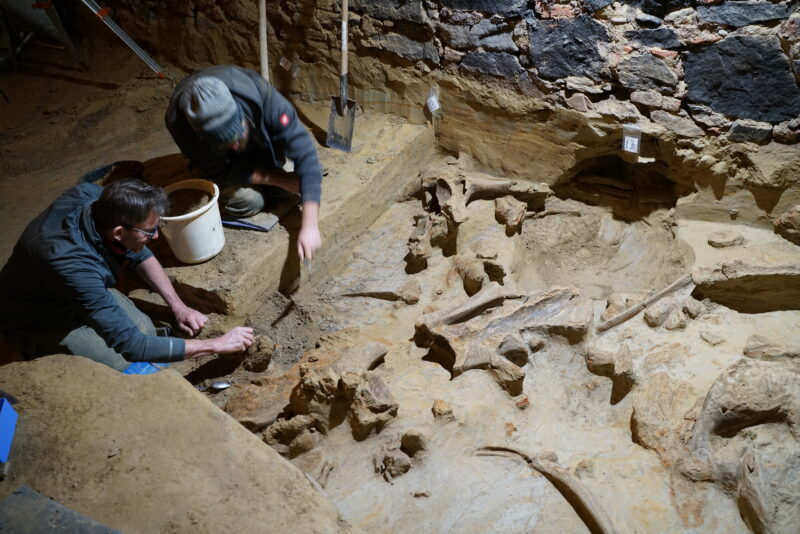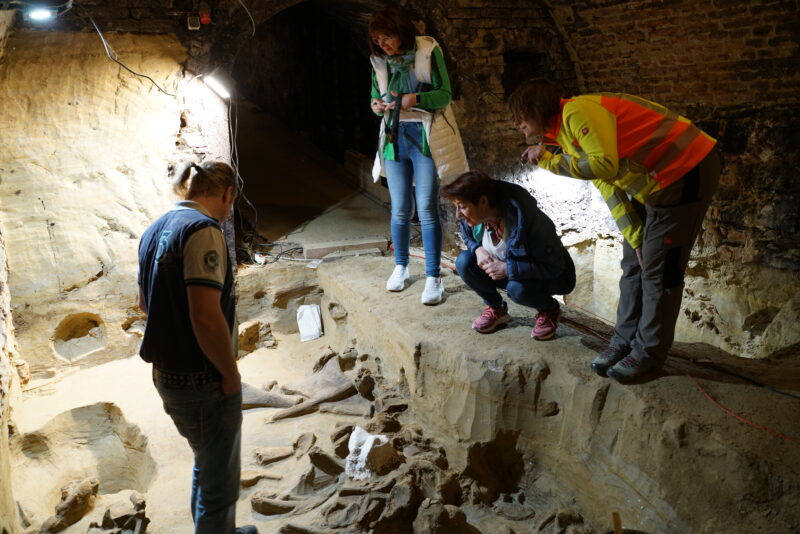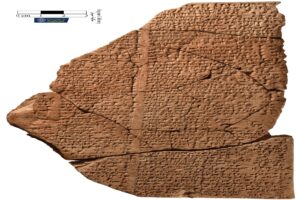Wine cellars typically contain old wine but not old bones. But when Andreas Pernerstorfer renovated the underground storage unit, the Vienna man discovered hundreds of mammoth remains.
Archaeologists are calling it the most significant find in over a century.
Pernerstorfers’ property lies 70km outside Vienna. After noticing that the floor in the cellar sloped slightly, he set about removing some of the concrete to level it out. That is when he came across the first bone.
Initially, he thought it was an old piece of wood, left there by his grandfather — the previous owner. It quickly became clear that there were several pieces of this unusual wood, and that it might not be wood at all.

Photo: Austrian Archaeological Institute
Old family story
He eventually remembered how his grandfather once told him that when he was extending the wine cellar, he too had made a discovery. He has found some mammoth teeth. Realizing the bones might tie in with his grandfather’s old story, he contacted the Austrian Academy of Sciences.
Archaeologist Hannah Parow-Souchin and her team started excavating in mid-May. “It quickly became apparent that it wasn’t just a few mammoth bones but very many,” she told CNN. Ultimately, over 300 of them.
“We think we have mostly the complete animals,” she continued. “They’re not in anatomical connection, but we probably have all parts.”
Most mammoth discoveries and excavations in the region occurred over 100 years ago. The team was incredibly excited. “It’s the first time we’ve been able to investigate something like this in Austria using modern methods,” said Parow-Souchon in a press release.

Photo: Austrian Archaeological Institute
Stone Age vintage
The bones seem to belong to three separate mammoths and date between 30,000 and 40,000 years old, which places them in the Stone Age. One big question is how did the remains of three mammoths end up so close to each other.
The team suspects that humans may have hunted them, potentially setting a trap at the site. The team hopes the new discovery will help them answer questions about the relationship between Stone Age humans and mammoths. “We know that humans hunted mammoths, but we still know very little about how they did it.”
The archaeology team thinks this might be part of a larger site. A neighboring cellar was excavated 150 years ago. It contained two layers — one of bones and a number of artifacts, including jewelry, decorative fossils, and charcoal. It is possible that the two sites are connected.






